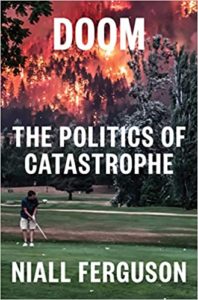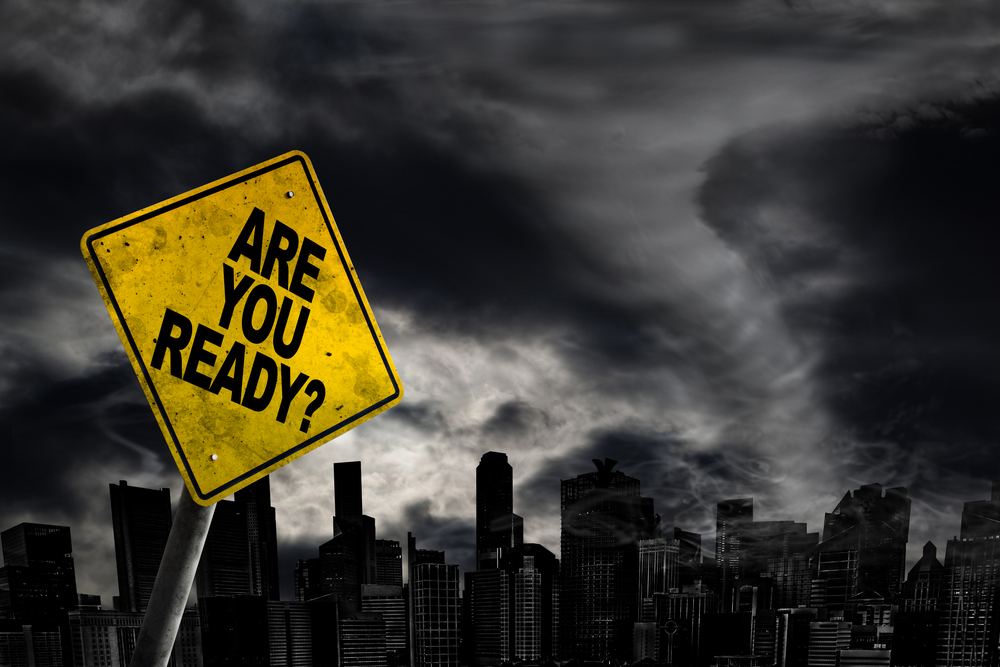I am neither famous, nor Oxford trained. I do not hold a prestigious position at the Hoover Institute, nor have I won “many prizes” as Niall Ferguson’s bio at the end of his book, Doom: The Politics of Catastrophe, proclaims. So I begin this review with several obvious disadvantages compared to the esteemed author.
But much like Ferguson I have written a few pieces about COVID during the recent pandemic. I also have a multi-disciplinary perspective on things and a lot of sympathy for the political outlook he brings to this work. So I’m not here either to unduly praise the book or savage it. However, one has to acknowledge what this is.

First off, it’s kind of a frantic mess. It’s like trying to drink water out of a fire hydrant, using a straw. Keeping up with Ferguson’s learned and descriptive stories that supposedly help illustrate various points can be exhausting. His reliance on lists and terms from writers and thinkers throughout the social sciences can be overwhelming. Second, there’s the nature of the project. Is this history? Is it social science? Is it policy proscription? Is it all three? And finally one has to ask now, in 2022, are his observations about the pandemic and the US government’s response to the crisis timely and helpful in understanding what went wrong and how to prevent a similar crisis in the future?
Rather than trying to cram this all into one essay I’ve opted to divide into three parts. In this first part, I’m going to address the issue of what, academically, he’s doing here by asking a question I often ask my history colleagues, namely what exactly is the nature of history and how should we approach studying it?
In his extremely timely and relevant introduction to the edited volume Capitalism and the Historians, F.A. Hayek addresses one of the key issues that any historian writing about controversial political questions must face, namely what questions are relevant and important to study.
He notes:
Hayek’s goal is to present a series of essays defending the Industrial Revolution in the wake of left-wing histories that focus on workers suffering during the development of modern industrial growth. Ferguson’s agenda here is much murkier, and therefore much more difficult to determine. What kind of history is this exactly?
In the first substantive chapter, he explores the nature of death, which seems more philosophical and meandering than direct and clear. In the next chapter he briefly examines cliodynamics, which focuses on data collection as a way to understand social and national decline. But then he moves quickly into Jarod Diamond’s work on social and economic collapse and then human heuristics and biases. Is this a book about social and economic collapse? Is it about population dynamics and environmental forces? Disease? It’s a bit bewildering and we’re only about 70 pages into it.
Ferguson then takes the reader abruptly into various types of disasters that seem, to this reviewer, unrelated to the issue of the pandemic, such as population carrying capacity, social collapse based on environmental forces, and human biases. I mean, how do we relate catastrophic earthquakes and volcanic eruptions to heuristics and biases? These types of disasters seem like unpredictable exogenous shocks, not errors based on human nature. I’m not sure we can reasonably expect the ancient Romans or Chinese authorities in the 15th century to have been able to use seismic information to predict earthquakes and move cities accordingly.
None of this is to say that the information Ferguson provides to the reader isn’t interesting, written with flair, or incorrect. But it’s not organized in a coherent way to address the theme we are presented in the beginning. Furthermore, it’s not clear what his historiography is either. Is this history? Showing off one’s intellectual breadth? Displaying how stir crazy we all were during lockdown? I’m not sure, but I think this effort could have used a little thematic clarity in the first third to aid readers who are likely to be frustrated with the nature of this project.


READER COMMENTS
Cecil Bohanon
Aug 15 2022 at 11:33am
Look forward to essays 2 and 3, Patrick. I get the sense what lots of us are thinking about is a “hot mess”– maybe that is why I can’t seem to connect the disparate readings of the last year into anything coherent. Or maybe I’m just entering into my dotage. Don’t know, don’t care to know
Comments are closed.